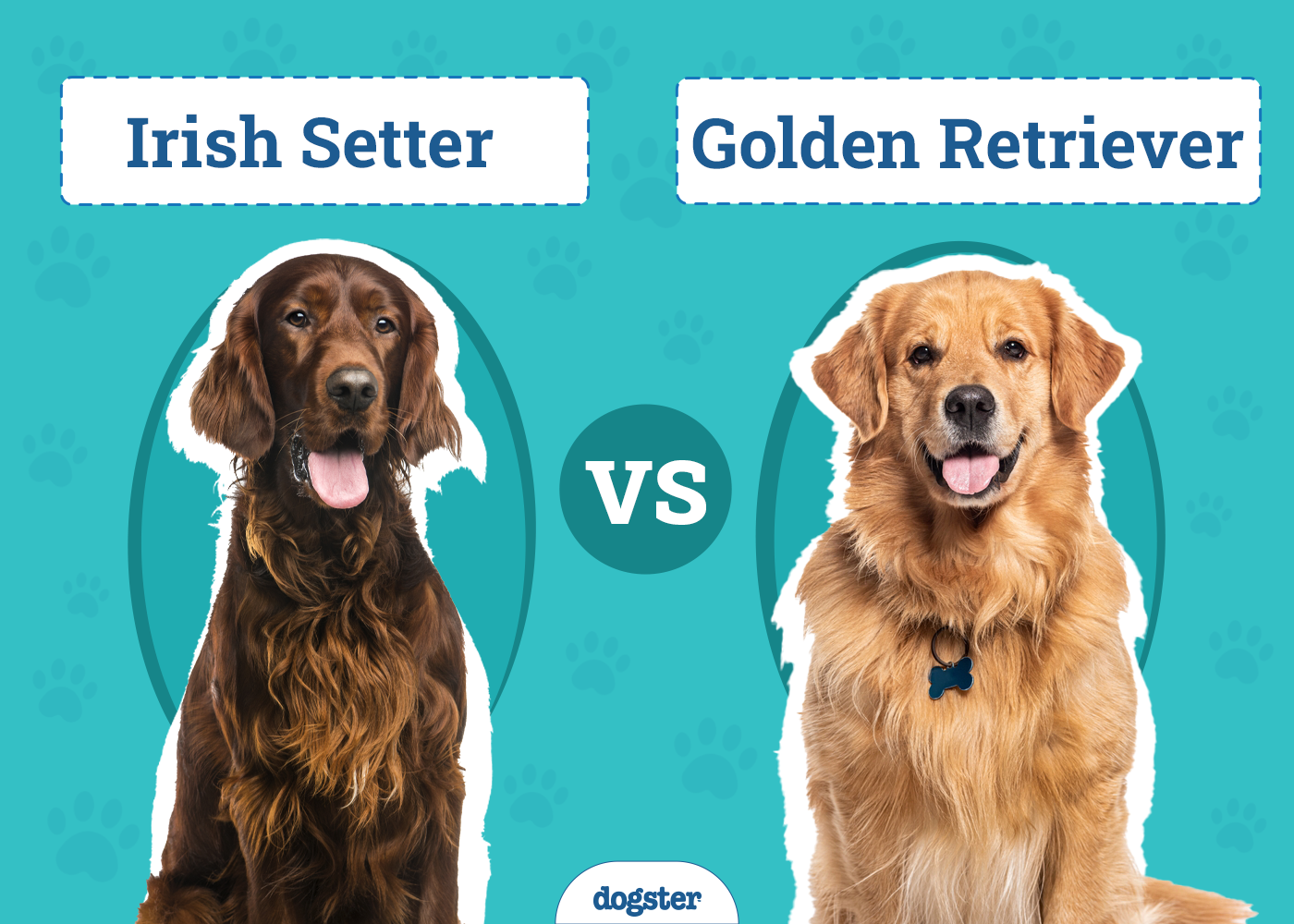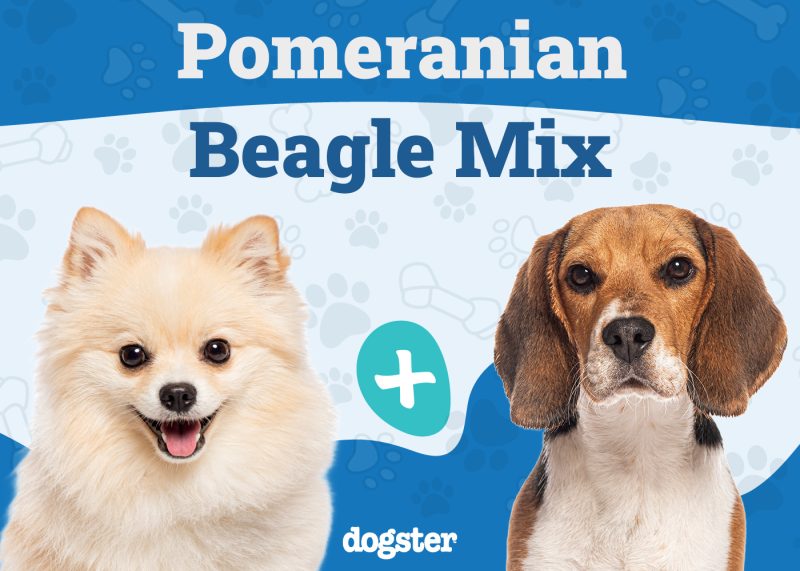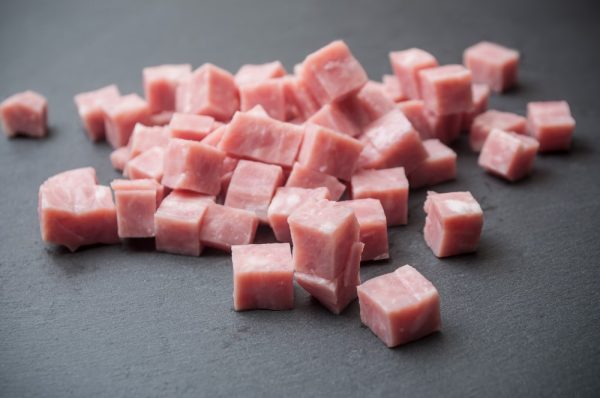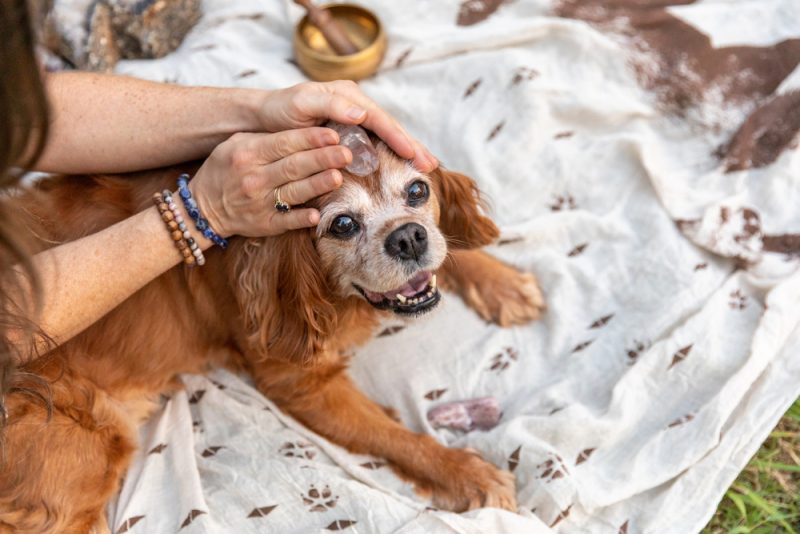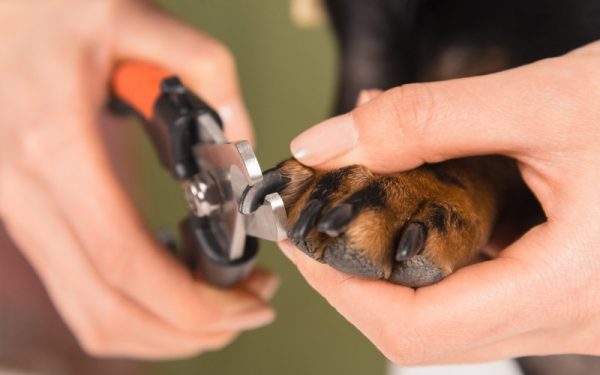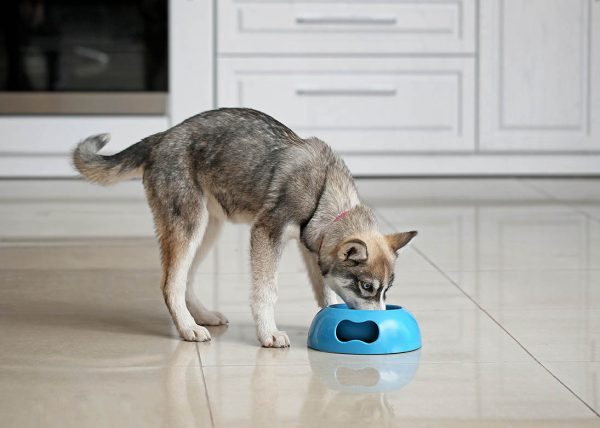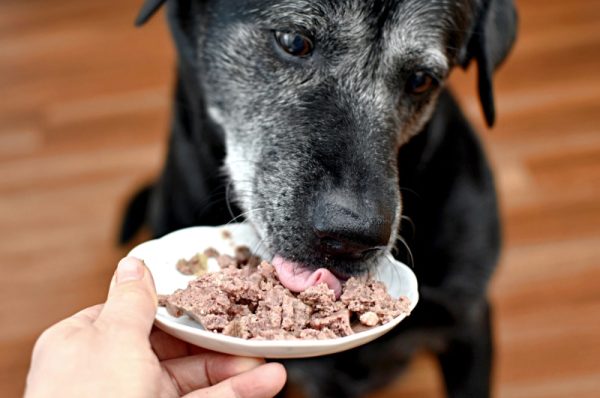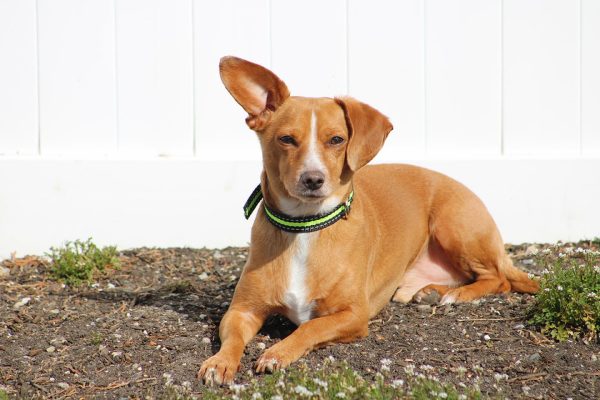In this article
View 3 More +It can be difficult deciding what kind of dog breed you’d like to adopt, especially when you’re considering breeds that are similar such as the Irish Setter and Golden Retriever. Both of these breeds are energetic, fun-loving, loyal, and affectionate. But there are a few minute differences between the two that can help you figure out which would be best for you.
We’re covering each breed in-depth here—everything from personality to how trainable they are to how much care is needed for each. With this breakdown, you’ll have a simpler time deciding if the Irish Setter or Golden Retriever would make a good addition to your life.

Visual Differences
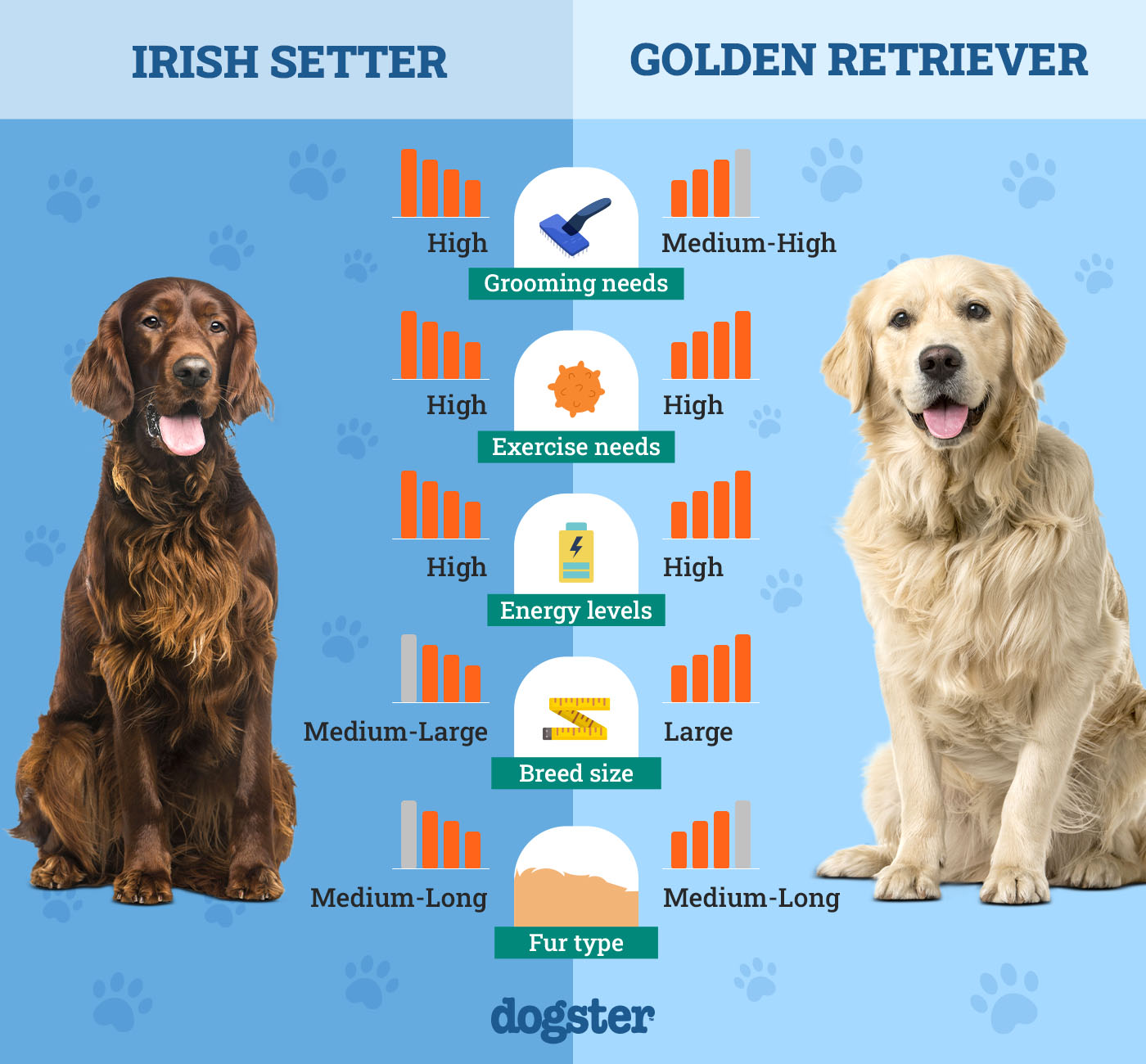
At a Glance
- Average height (adult): 25–27 inches
- Average weight (adult): 60–70 pounds
- Lifespan: 12–15 years
- Exercise: 1+ hours a day
- Grooming needs: Moderate
- Family-friendly: Yes
- Other pet-friendly: Yes, with dogs; maybe with smaller animals
- Trainability: Highly intelligent, eager to please
- Average height (adult): 5–24 inches
- Average weight (adult): 55–75 pounds
- Lifespan: 10–12 years
- Exercise: 45–60 minutes a day
- Grooming needs: Mild
- Family-friendly: Yes
- Other pet-friendly: Yes
- Trainability: Incredibly bright, attention to detail

Irish Setter Overview

The Irish Setter is easily recognized by its silky red coat and is one of the most well-loved dog breeds around. Despite being known as high-spirited pups that love to run and play, the breed is also known for being graceful and fast on its feet. In fact, the Irish Setter was originally bred to be a sporting dog—easily seen in the shape of its long, lean body and strong legs. That makes it not only an excellent pet but an excellent hunting partner as well. And it’s no wonder the breed has stayed popular for over 200 years, given its sweet, loving personality.
The Irish Setter breed is excellent for families, particularly active ones, as they get along well with people and love to romp and play. These dogs are basically kids at heart themselves! Plus, this dog does well with training as they are eager to please and incredibly bright. Irish Setters even do well with other pets in the home (although you’ll need to be cautious when pairing them with smaller animals, such as cats, as the dog’s hunting instincts may get triggered).
Personality / Character
Irish Setters have an attention-grabbing personality; the breed adores being in the center of things and is always up for a good, playful time. Though fairly easygoing, the breed does have a penchant for stubbornness—the Irish Setter is fond of getting its own way. But this dog is also mischievous, affectionate, brilliant, and loyal to its family. And with the breed’s ease with training and alert nature, they make for wonderful watchdogs. These pups aren’t aggressive, but they can undoubtedly be protective!
There’s no doubt that having an Irish Setter around in your daily life offers plenty of fun and excitement but be forewarned that this breed does take longer to mature than others. That means your pup might be four years old physically but still have that puppy mentality, which can be overwhelming for some.
Training
The Irish Setter sometimes gets a reputation as an airhead, but the breed is smart. They’re also independent thinkers who can sometimes be stubborn to a fault. This means that while these dogs can pick up training quickly, it will also take patience, time, and a sense of humor to get the job done.
This breed is certainly eager to please its people and willing to learn, but if you’re trying to get them to do something that doesn’t seem fun, they might resist. If you stay firm and consistent in training and offer plenty of rewards in the form of treats, play, and praise, you shouldn’t have many issues.
If it seems too large a job for you to handle, invest in a reputable trainer or good series of training classes to ensure your pup is properly trained.
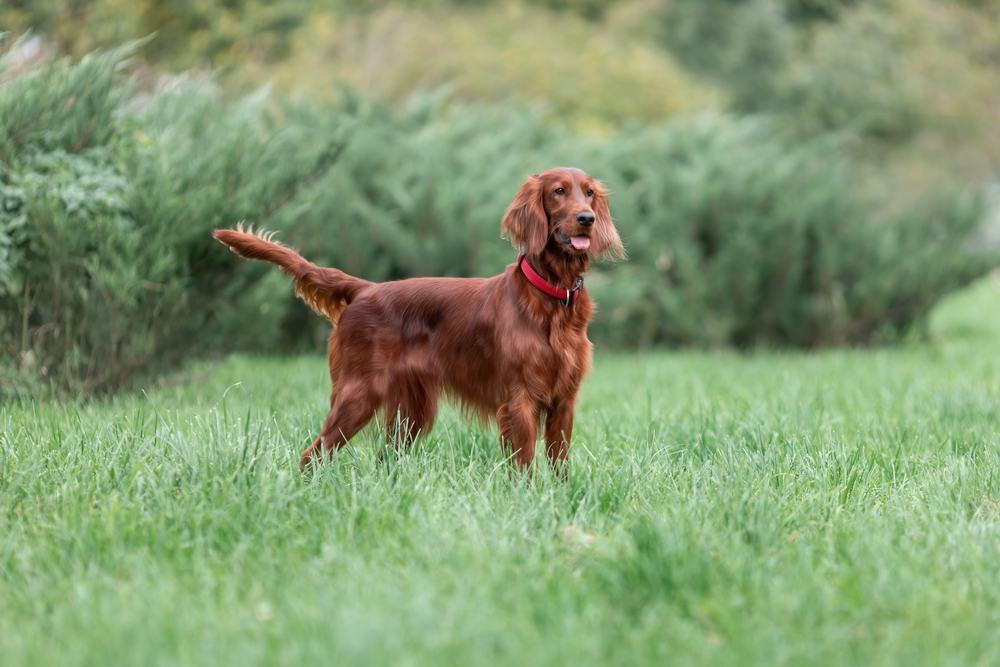
Health & Care
The Irish Setter is known for being a relatively healthy breed, but all animals have specific health problems they are more prone to.
- Hip dysplasia
- Hypothyroidism
- Osteochondritis Dissecans
- Hypertrophic Osteodystrophy
- Gluten Sensitivity
As far as caring for your Irish Setter, one of the most important things to remember is that these pups are extremely active and high-energy. So, don’t think you can just walk around the block once or twice and have them be tired out. Nope, you’ll need to engage this dog with running, dog parks, hiking, and romps in the backyard.
And when it comes to grooming, the Irish Setter will need to be brushed frequently due to its long, silky coat. It may take a little time, but it’s necessary. You’ll also want to bathe your dog every 4–6 weeks, clean its ears weekly, brush your pet’s teeth, and trim your pup’s nails as needed.
Suitable for:
The Irish Setter makes a good pet for a number of people. An Irish Setter is a great choice if you have a family since they are so good with children. You’ll also get along extremely well with this breed if you’re a highly active person. And if you already have pets, you should be fine adding an Irish Setter to the mix (though be careful when introducing smaller animals). But this breed isn’t for you if you’re more of a couch potato or often away from home.

Golden Retriever Overview

The Golden Retriever is one of the U.S.’s most popular dog breeds, which should come as no surprise. These beauties, known for their lovely gold coats, not only make amazing family pets but excel as working dogs. They help out in a variety of jobs ranging from working fields to guiding the blind to aiding in search-and-rescue missions. What can this breed not do?
Just because it’s a working dog, though, it doesn’t mean this breed doesn’t know how to have a good time! The Golden Retriever may be incredibly smart and trainable, but when not working, this is a breed that enjoys life. You’ll find Golden Retrievers sociable, eager to please, and loyal. These pups are also super energetic, so they will need lots of playtime—preferably outdoors. The Golden Retriever won’t be happier than when it’s spending hours fetching, retrieving, running, and swimming outside.
Like the Irish Setter, the Golden Retriever is known to keep up a puppy mindset well into adulthood (though a little less so than the Irish Setter), so be aware of that.
Personality / Character
The Golden Retriever’s defining feature (other than its coat) is its temperament. This breed is known for being easygoing, gentle, affectionate, and kind. And these personality traits make them excellent for the role of everything from family pet to working dog to therapy dog. The Golden Retriever is also emotionally intuitive, adaptable to new situations, and very people-oriented.
This love of people, combined with their innate hyperactive natures, can make them prone to jumping on people in greeting and being a bit more on the rambunctious side (particularly in puppyhood), so you’ll need to begin training them early to break bad habits like these. Other than that, you can expect them to keep a puppy mentality well into adulthood, so be prepared for a lifetime of friendly fun.
Training
Luckily, Golden Retrievers are fairly easy to train since the breed is bright and loves to please its people. So, starting with them young will see you having to invest only a short period into the job (though keep in mind some puppies are more stubborn than others). But early training and socialization are a must, considering these pups’ sometimes wild natures. Otherwise, it’s easy to get overwhelmed by them.
If you think you don’t have the time or patience to invest in training a Golden Retriever properly, you should be able to find a reputable trainer in your area fairly easily.

Health & Care
Unfortunately, the Golden Retriever isn’t as hardy as the Irish Setter. In fact, this breed is quite prone to cancer, which is the number one cause of death for these dogs. That’s not to say that all Golden Retrievers will develop cancer, but it’s something to be aware of. You should also be mindful of other health challenges that could arise when owning one of these pups.
- Epilepsy
- Obesity
- Hip dysplasia
- Hypothyroidism
One of the more vital aspects of caring for your Golden Retriever, other than watching its health, is by ensuring your dog has been adequately trained and socialized and is exercised enough each day. If not, your pup’s rambunctious nature can easily become a bit too much—particularly for kids. And though these dogs are active by nature, the exercise requirements are a bit less than those of an Irish Setter. The Golden Retriever will be kept happy by a couple of long walks each day as well as with games in the backyard.
The Golden Retriever may require more grooming than the Irish Setter. Even though the breed has long hair, you can keep brushing to once a day (though you may want to use different brushes depending on whether you’re deshedding or simply straightening out tangles). Other than that, a bath every 4–6 weeks should do the job, along with cleaning ears once a week and regularly trimming nails and brushing teeth.
Suitable for:
Golden Retrievers make excellent family dogs, as they’re great with small children and protective, too. This breed is also suitable for those with active lifestyles, as they love going on adventures with their people. The Golden Retriever is even ideal for those who are older and a bit less active (though you might want to skip the puppies and get one that’s been trained). Plus, you can introduce this pup if you already have other pets in the home, as they should get along fine. The only caveat is you should keep Golden Retrievers away from animals that are caged (mice, hamsters, etc.) as pets this small could trigger the dogs’ prey drive.

Which Breed Is Right for You?
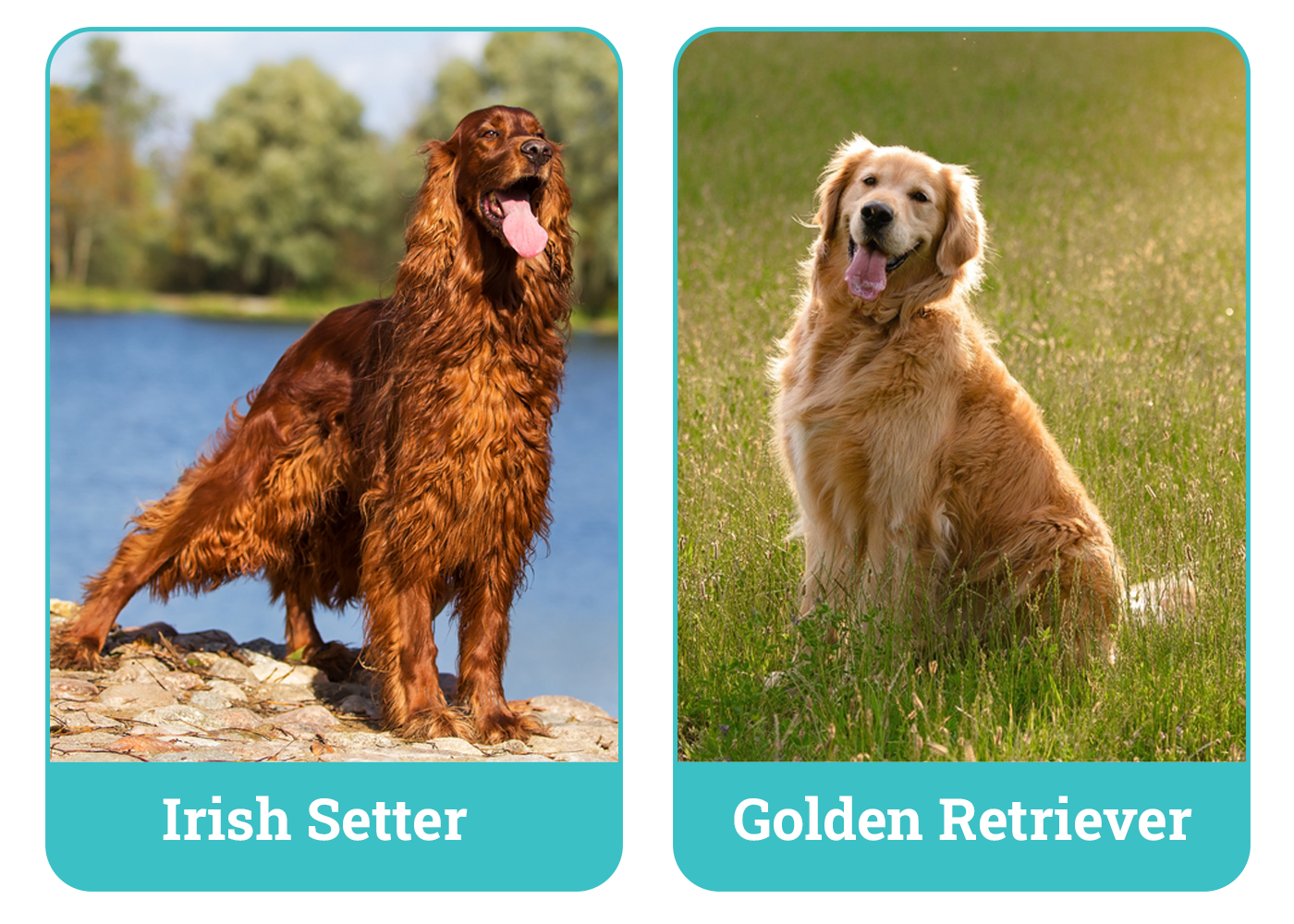
Whether an Irish Setter or Golden Retriever is right for you will come down partially to personal preference but also to how active you are. Both of these dogs are quite energetic, but the Irish Setter is a bit more so and will require more intensive daily activity than the Golden Retriever. You’ll also want to consider the Golden Retriever’s penchant for developing cancer when deciding on a pup; the Irish Setter is a hardier breed. Overall, though, the Irish Setter and Golden Retriever are fairly comparable and will make excellent companions for most people.
Featured Image Credit: Top – Mr_Incognito_, Pixabay | Bottom – lecreusois, Pixabay

